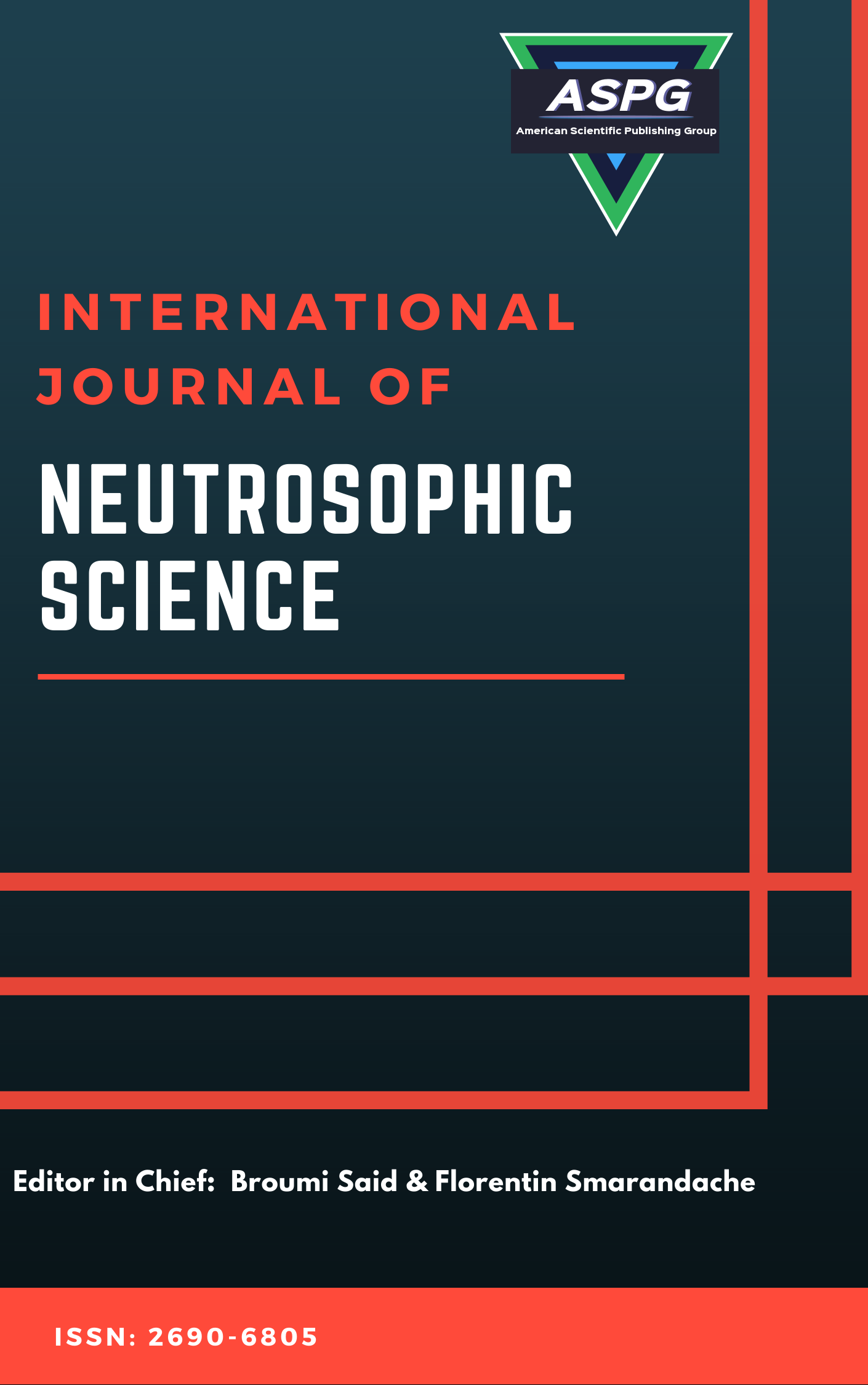

Volume 26 , Issue 2 , PP: 192-203, 2025 | Cite this article as | XML | Html | PDF | Full Length Article
Maryam Almutairi 1 , Norazrizal Aswad bin Abdul Rahman 2 *
Doi: https://doi.org/10.54216/IJNS.260214
Fuzzy fractional partial differential equations have become a powerful approach to handle uncertainty or imprecision in real-world modeling problems. In this article, two compact finite difference schemes, the compact Crank-Nicolson and the compact center time center space methods, were developed and used to obtain a numerical solution for fuzzy time fractional wave equations in the double parametric form. The principles of fuzzy set theory are utilized to perform a fuzzy analysis and formulate the proposed numerical schemes. The Caputo formula is used to define the time-fractional derivative considered. The stability of the proposed schemes is analyzed by means of the Von Neumann method. To illustrate the practicality of the numerical methods, a specific numerical instance was performed. The outcomes were showcased through tables and figures, revealing the efficacy of the schemes in terms of accuracy and their ability to decrease computational expenses.
Compact finite difference methods , Fuzzy Caputo formula , Double parametric form , Fuzzy time fractional wave equation
[1] S. G. Samko, A. A. Kilbas, and O. I. Marichev, Fractional Integrals and Derivatives, vol. 1. Yverdon-les-Bains, Switzerland: Gordon and Breach Science Publishers, 1993.
[2] I. Podlubny, Fractional Differential Equations. San Diego, CA: Academic Press, 1999.
[3] K. Oldham and J. Spanier, The Fractional Calculus: Theory and Applications of Differentiation and Integration to Arbitrary Order. Elsevier, 1974.
[4] K. S. Miller and B. Ross, An Introduction to the Fractional Calculus and Fractional Differential Equations. Wiley, 1993.
[5] J. M. Carcione, Wave Fields in Real Media: Wave Propagation in Anisotropic, Anelastic, Porous and Electromagnetic Media, 2nd ed. Elsevier, 2007.
[6] W. Chen, H. Sun, and X. Li, Fractional Derivative Modeling in Mechanics and Engineering. New York: Springer, 2022.
[7] A. F. Jameel, A. Saaban, and H. H. Zureigat, "Numerical solution of second-order fuzzy nonlinear two-point boundary value problems using combination of finite difference and Newton’s methods," Neural Comput. Appl., vol. 30, pp. 3167–3175, 2018.
[8] J. Sullivan, T. Iadecola, and D. J. Williamson, "Planar p-string condensation: Chiral fracton phases from fractional quantum Hall layers and beyond," Phys. Rev. B, vol. 103, no. 20, p. 205301, 2021.
[9] C. M. Jian and X. L. Qi, "Layer construction of 3D topological states and string braiding statistics," Phys. Rev. X, vol. 4, no. 4, p. 041043, 2014.
[10] H. Zureigat, A. I. Ismail, and S. Sathasivam, "Numerical solutions of fuzzy time fractional advection‐diffusion equations in double parametric form of fuzzy number," Math. Methods Appl. Sci., vol. 44, no. 10, pp. 7956–7968, 2021.
[11] H. Jafari and S. Momani, "Solving fractional diffusion and wave equations by modified homotopy perturbation method," Phys. Lett. A, vol. 370, no. 5–6, pp. 388–396, 2007.
[12] H. Zureigat, A. I. Ismail, and S. Sathasivam, "A compact Crank–Nicholson scheme for the numerical solution of fuzzy time fractional diffusion equations," Neural Comput. Appl., vol. 32, no. 10, pp. 6405–6412, 2020.
[13] N. H. Sweilam, M. M. Khader, and M. Adel, "On the stability analysis of weighted average finite difference methods for fractional wave equation," Fract. Differ. Calc., vol. 2, no. 1, pp. 17–29, 2012.
[14] P. Lyu, Y. Liang, and Z. Wang, "A fast linearized finite difference method for the nonlinear multi-term time-fractional wave equation," Appl. Numer. Math., vol. 151, pp. 448–471, 2020.
[15] Y. M. Wang, "A compact finite difference method for a class of time fractional convection-diffusion-wave equations with variable coefficients," Numer. Algorithms, vol. 70, no. 3, pp. 625–651, 2015.
[16] K. Ghode, K. Takale, and S. Gaikwad, "New technique for solving time fractional wave equation: Python," J. Math. Comput. Sci., vol. 11, no. 5, pp. 5327–5343, 2021.
[17] X. Liu, Y. Bo, and Y. Jin, "A numerical method for the variable-order time-fractional wave equations based on the H2N2 approximation," J. Funct. Spaces, vol. 2022, pp. 1–9, 2022.
[18] M. Arfan, K. Shah, A. Ullah, S. Salahshour, A. Ahmadian, and M. Ferrara, "A novel semi-analytical method for solutions of two-dimensional fuzzy fractional wave equation using natural transform," Discrete Contin. Dyn. Syst. S, vol. 15, no. 2, pp. 315–338, 2022.
[19] D. Behera and S. Chakraverty, "New approach to solve fully fuzzy system of linear equations using single and double parametric form of fuzzy numbers," Sadhana, vol. 40, pp. 35–49, 2015.
[20] M. Osman, Z. T. Gong, and A. Mohammed, "Differential transform method for solving fuzzy fractional wave equation," J. Comput. Anal. Appl., vol. 29, no. 3, pp. 431–453, 2021.
[21] M. Ghaffari, T. Allahviranloo, S. Abbasbandy, and M. Azhini, "Generalized Hukuhara conformable fractional derivative and its application to fuzzy fractional partial differential equations," Soft Comput., vol. 26, no. 5, pp. 2135–2146, 2022.
[22] L. Li and J. G. Liu, "A generalized definition of Caputo derivatives and its application to fractional ODEs," SIAM J. Math. Anal., vol. 50, no. 3, pp. 2867–2900, 2018.
[23] A. Salah, M. Khan, and M. A. Gondal, "A novel solution procedure for fuzzy fractional heat equations by homotopy analysis transform method," Neural Comput. Appl., vol. 23, pp. 269–271, 2013.